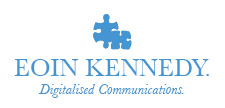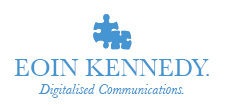Twitter and IIA Video Event
I find Twitter great when attending events to share insights but also to act as an always on note taking device. Previously most of my notes from conferences and seminars either ended up unreadable or got buried on my desk and finally shredded. Now I have somewhere to revert to, in order to jog my memory on some noteworthy quote, stat or observation that I heard.
Combine it with the right hash tag and you can always check against other tweets to remind yourself on the bits you could not type fast enough to capture or to correct inaccuracies.
I have, like lots of people, found my blogging has suffered as my twitter activity has grown. This is a pity as pithy, snappy tweets only give a fragmented, pieces missing view of a someones presentation or discussion.
I have decided to try use the tweets from the last few events I attended to piece together an overview, mainly as there were some resources I wish to test out and use again
The first was Audio Video Culture – Behind the scenes of video and audio. The event was organized by the IIA Social Media Working Group, of which I am a member. The idea behind the event was to show how different organizations are using video and also to give some practical advice on equipment and software. This is the part that I was particularly looking forward to.
RTE kicked off the first session with some interesting stats on their iPlayer usage. 35% of people watch entire shows with an average stream of 18 minutes. This is impressive when your consider that most people will be viewing it on a poor quality computer screen at a desk which is a completely different experience to that of slouching on a couch. The speaker did point out that a large screen interface and faster streaming are in the pipeline which fits in with the general consensus that we will be replacing watching downloaded movies on our laptops to the plasma screen stuck to the wall.
Apparently 30 to 50% of their streams are from the international player, something that presents lots of licensing challenges especially as RTE get popular show such as Desperate House Wives before other countries. Their solution is to remove certain shows.
Next up was Rabo Bank who play a good deal of attention to online video, audio and social media as they have to compete with bricks and mortar banks to build relationships with customers. Aoife Mahon & Gina McCrudden gave some nice examples of video testimonials, webinars and podcasts that they use. Their podcasts alone have generated a listenership of over 35K while webinars have waiting lists of 300 people at times. They also integrate other marketing activities into their plans, an example being the Fix Its competition with George Hook on Newstalk being used on the site.
Fred Caballero from Channelship set the scene for his presentation by talking about YouTube being the second search spot after YouTube, which was surprising considering the Google/Facebook supremacy stories but it could be for specific searches. He also detailed YouTube’s 6.6 billion streams and 75% market share. In particular I wanted to hear about what tools Fred used. Below is a list of the particular good ones.
- Tube Mogul for distributing video.
- ScreenToaster and Camtasia Studio for screen recording and talking through presentations. Especially good for the camera shy.
- Gotowebinar and Onlinemeetingrooom.com for hosting online conferences/chats. The later is a really nice cost effective solution when you have people scattered geographically and want to share presentations as well as teleconferencing people in.
- Ustream.tv for live streaming of events. Laptop, video camera and an internet connection was all that was used to broadcast the event and quality look pretty ok. More powerful than QIK from what I have seen and it also incorporates twitter streams once they are correctly has tagged. Justin.tv was also mentioned as a good alternative.
Finally the last presentation was from Donal Rice from the Centre for Excellence in Universal Design. I have seen Donal present a number of time over a few years and usability has moved from a nice to do to a more structured need to do for some organizations. His message has also become more commercial from opening points about grey surfers being the fastest growing market to level of normal diversity and disability in the marketplace.
Usability can tend to be associated with disability but some of his points on closed captioning and audio descriptors for YouTube videos related to people whose first language may not be English, working in noisy environment or who need to work in a quiet/silent environment rather than just people who are hard at hearing.
The pitch of increased usability being good for SEO made relative sense (kind of similar to advance tagging) and was creative in trying to enhance the level of usability investment.
These carrot items came just before the stick in terms of quotes from the UN Convention on the Rights of Persons with Disability and the Irish Disability Act 2005/Equal Status Act. These are currently loose but further European legislation is expected where having an accessible website will be similar to buildings needing wheel chair access.
The Web Content Accessibility Guidelines 2.0 are fairly detailed in terms of different levels of grading from A to AA but I cannot ever recall a web designer bringing it up with me on client projects.



2 Comments. Leave new
That’s really interesting about the popularity of RTE iPlayer, Eoin, and good to know that improvements are on the way.
Thanks Emily. I also some interesting figures about the BBC player at the Generator event which I hope to upload. Babies and blogging dont really mix so it might take a while!